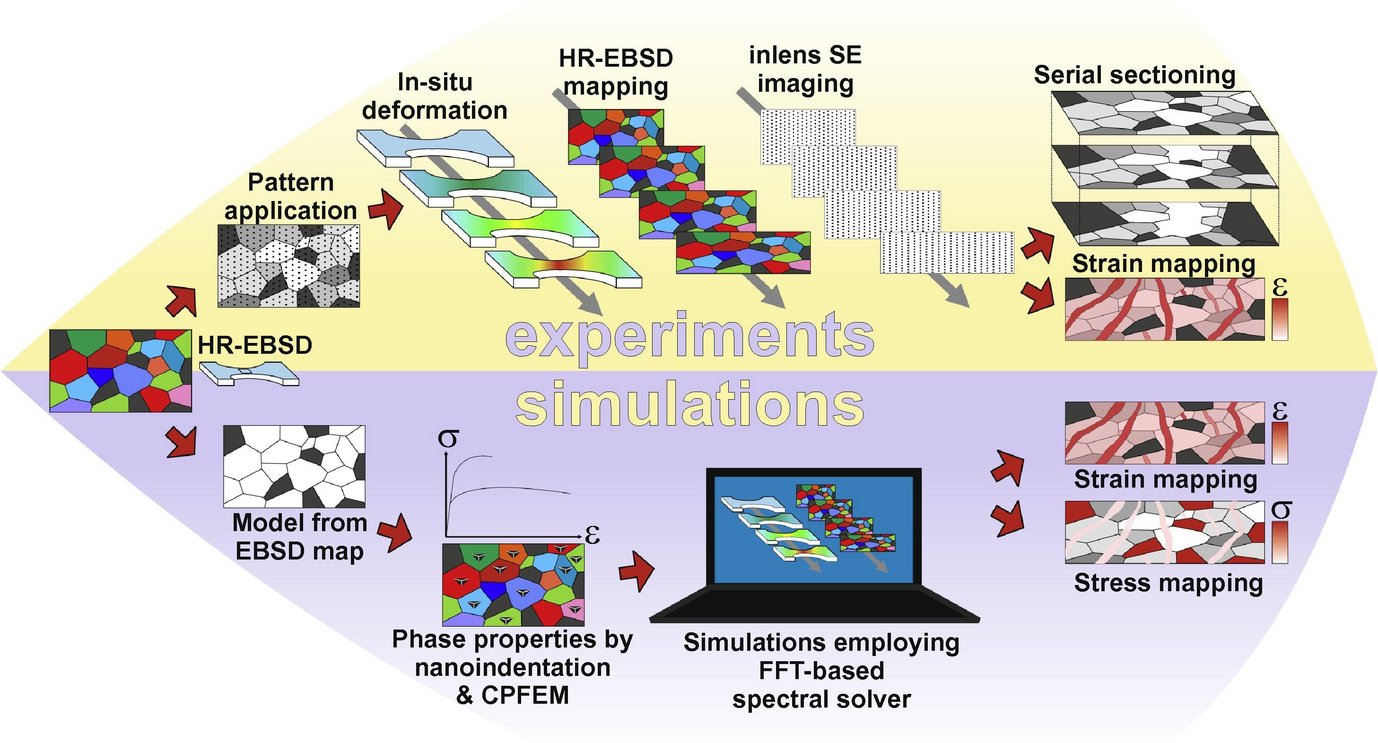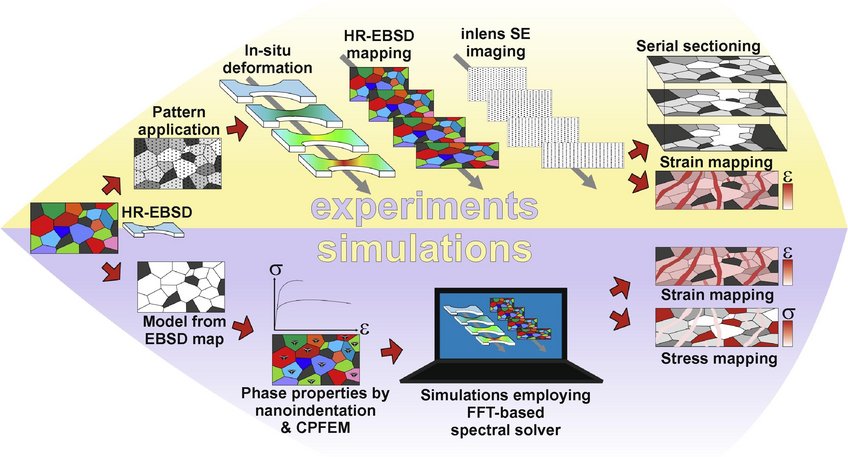Integrated experimental–simulation analysis of stress and strain partitioning in multiphase alloys
Limitations in the characterization of the partitioning of multiphase alloys, which takes place at the submicron scale, lead to a microstructure optimization of these alloys typically based on the evaluation of the averaged response referred to the macroscopic stress-strain-curves. We introduce a novel experimental-numerical methodology to strengthen the integrated understanding of the microstructure and mechanical properties of these alloys.
The mechanical properties of multiphase alloys are mainly determined by the microscopic strain and stress behaviour of the involved microstructural components and their partitioning. The characterization of the partitioning takes place at the submicron scale and is therefore limited. The macroscopic stress-strain-curves are typically the basis for the evaluation of the averaged response for microstructure optimization of such alloys. The deformation-induced evolution of the microstructure and the local strain distribution are captured at the same time. In situ secondary electron imaging and electron backscatter diffraction (EBSD) for the microstructure and microscopic-digital image correlation for the local strain distribution come into use. 2-D full-field crystal plasticity (CP) simulations conducted with an advanced spectral solver suitable for heterogeneous materials reveal local strain as well as stress distributions. The simulated model is directly derived from the initial EBSD measurements. Additional inverse CP simulations of nanoindentation experiments, carried out on the original microstructure, lead to the phase properties. The experiments and simulations show a good correlation in the proof-of-principle study carried out on a martensite-ferrite dual-phase steel. With regard to the limits of the techniques used, the deviations are discussed.

